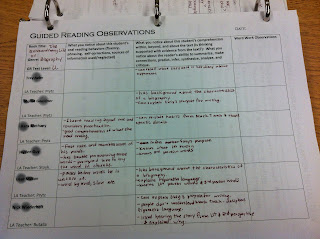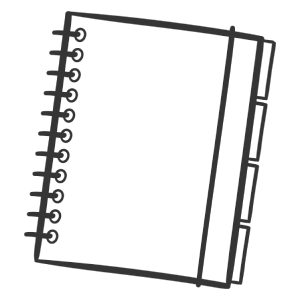We have come to find out at RLMS that incorporating guided reading into a middle school classroom can be a bit tricky at time, but the payback that we’re already seeing makes it worth it. We have several factors working against us, the first factor is time. At the elementary level in our district the literacy block stretches a two and a half hour time span. At the middle school level, we have 90 minutes with each group of Language Arts students daily. There is really no flexibility with this either since students travel to different teachers for their classes throughout the day. Within that 90 minutes, teachers fit in a writing minilesson with independent writing time for students and a reading minilesson with independent reading/guided reading.
With the 6th grade team of Language Arts teachers that I work with, we schedule our groups at an exact time that we all stick to and each see five or more groups per week. I have been a YA novel/non-fiction reading machine these past couple of weeks. I will admit that I have a much stronger love for writing than reading. It has been really good for me to be reading every night. I surprisingly have even developed a strong appreciation for reading non-fiction texts, something I used to despise. Check out some of my pictures below, documenting the organizational systems I have been using for guided reading and what types of information I’ve been learning about my students so far…

I started to keep a place to put handouts that I like to use during guided reading. I have found KWL charts to be helpful for non-fiction books that we read across several days. In addition, I’ve been using Chapter Grids with boxes to write summaries for each chapter of a book for students to be able to remember and keep track of what we’ve read when reading a text that takes us several guided reading sessions.
Using the separate book boxes for each group has really helped me stay organized. If students check out a book to take home and read, I fill out a check-out sheet and place it right in that group’s box so I can track books. I also have gotten a white board (I guess it’s actually a silver board :)) to use for word work and to introduce vocabulary during the text introduction.
Having all my guided reading supplies within an arm’s reach has really come in handy for me so far. I never have to get up to go find a supply and waste valuable guided reading time.
I always keep my guided reading binder with my guided reading lesson plans and anecdotal notes right with me during guided reading lessons. I have found it helpful to flip open to the lesson plan and leave it open throughout the lesson and take out the anecdotal notes to place on a clip board so that I can move the clipboard around as I’m checking in with each student during the reading of the text.
This is the instructional level expectations chart from Fountas and Pinnell that we use to determine if students are below, at, or above grade level. This also dictates which students receive a reading intervention outside of guided reading in the classroom and how often students receive guided reading throughout the week.
This is the lesson planning template that I use when planning my guided reading lessons. It covers the text introduction, where I plan out what the challenges of the specific text are and how I will address these with the students to make the text more accessible to them as they are reading. I also plan out how I will break the text apart over several days.
On the back of the lesson planning template, I plan out how I will discuss and re-visit the text by selecting questions that hit within, beyond, and about the text. I also plan out how I will model a reading processing strategy surrounding the text, word work, and any extension activities.



Above are a few samples of the note taking template I’ve been trying out for guided reading. Vertically, it lists the names of the students in the group. Horizontally, the first column is for notes on students’ fluency, the second column is for notes on students comprehension for within, beyond, and about the text, and the third column is for any notes relating to word work. This template has been working really well so far. I am able to get down a lot of information about my students during each guided reading session. Looking back over my notes, in a few short weeks I can already see the trends that are beginning to develop and ways that my guided reading students are improving their reading. It also helps me to know what to teach for surrounding reading to the group or to individual students.
If you are a middle school teacher interested in getting guided reading going in your classroom, please don’t hesitate to ask any questions. The most eye-opening part of starting guided reading this year in my own groups and then also when I’m coaching the 12 LA teachers in my school are that each student is SUCH a unique reader. Each student has strengths and weaknesses as a reader that need to be unraveled and worked on in a small group setting.
Students who are below level readers get the opportunity to access a book at their level and have rich conversation around text instead of “faking” like they know what is going on to fit in. Students who are above grade level are being challenged by reading books at their instructional level and having conversations with their peers at that same instructional level. I’ve been reading up on ZPD, and guided reading seems to match this educational theory perfectly because as teachers, we are working with students at their highest instructional reading level, providing scaffolds that we gradually remove and then selecting texts that match the readers’ progress as we go. It’s a BEAUTIFUL thing! I’m so excited to see the positive results that guided reading has on our students at RLMS because the LA teachers are working their butts off to make the guided reading experience worthwhile and beneficial to readers at all levels!
Thanks for reading and let me know if you have any questions! 🙂
Kasey












